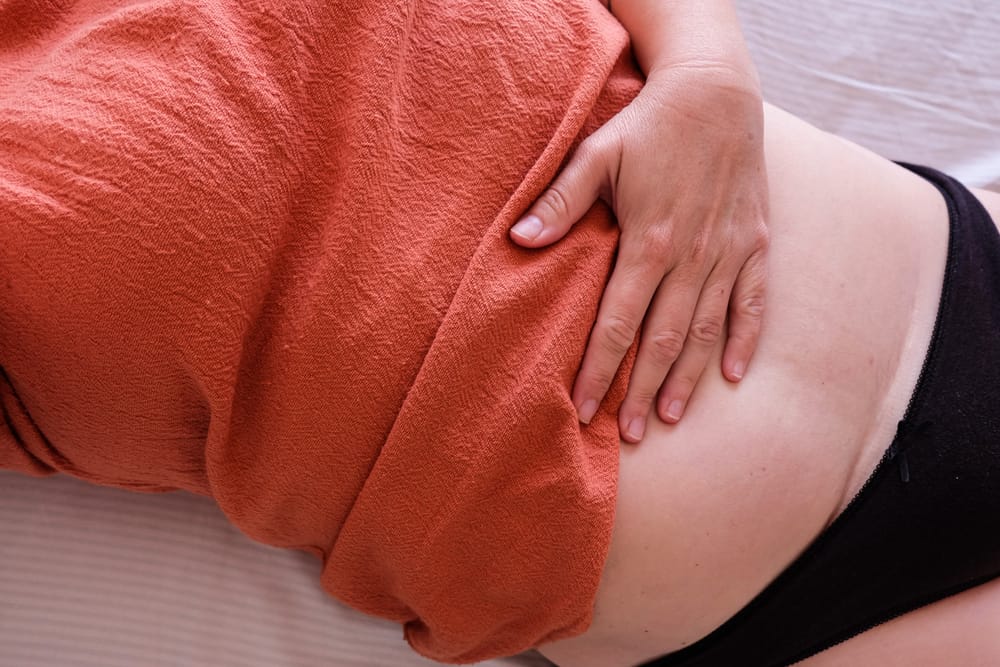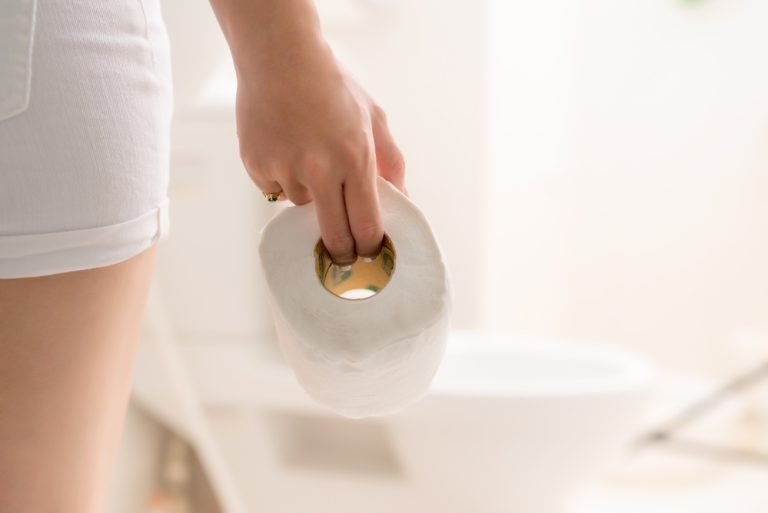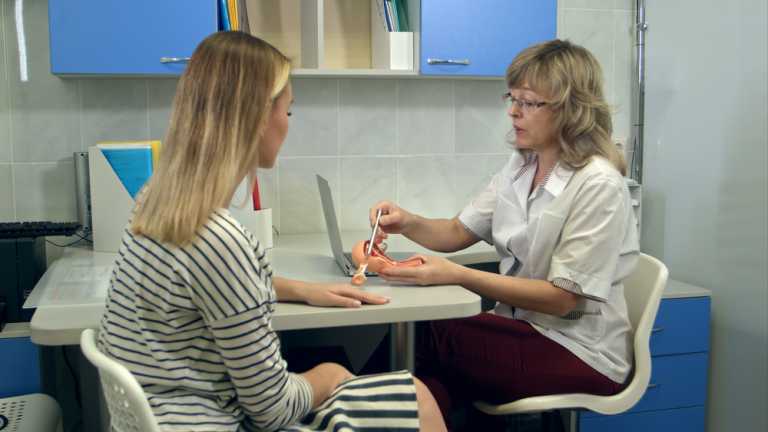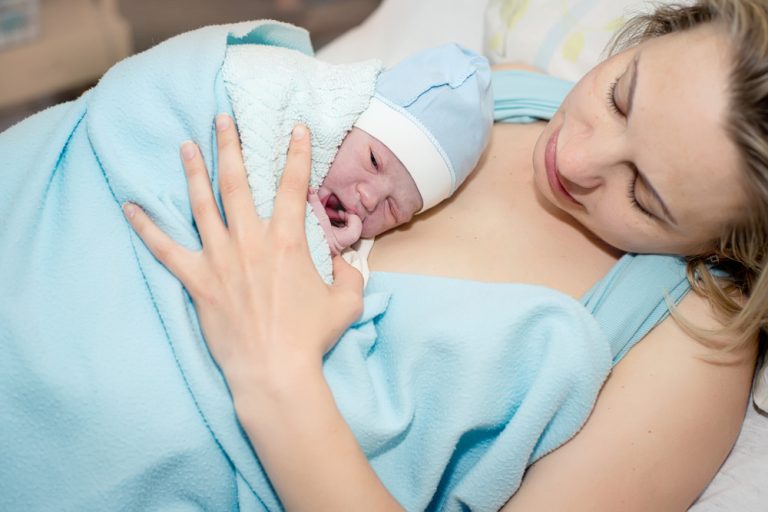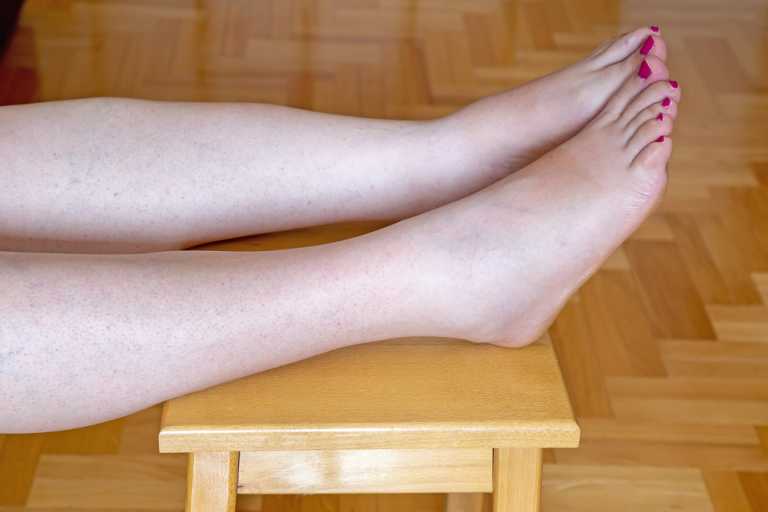Have you heard about the potential risk of developing a hernia after a C-section? It’s a frequently overlooked complication that can arise a few months or even years after your surgery.
Happily, the likelihood of developing a hernia after your C-section is low. But being aware of the steps you can take to minimize the risk is crucial, and we’ll guide you through them.
But what if you suspect you already have the condition? Don’t worry! We’ll explain the diagnosis process and treatment options too.
What Is a Postpartum Hernia?
A hernia is a condition where your abdominal lining or internal organs squeeze through a gap in your muscle wall.
There’s a slight chance of this happening as a result of a C-section because the incision creates an area of weakness. This is called an incisional hernia.
It can occur right after your surgery but also up to 10 years later.
What Are the Symptoms of a Hernia After a C-Section?
If you have an incisional hernia, you may notice the following symptoms:
A Bulge in Your Abdomen
The most common and noticeable symptom is a bulge in your abdomen near your incision. Occasionally, you may have more than one.
However, it can be tricky to tell the difference between a lump caused by a hernia and one caused by diastasis recti.
What Is the Difference Between Diastasis Recti and a Hernia?
Diastasis recti occurs when pregnancy stretches the muscles and connective tissue in your abdominal wall. This allows your internal organs to push outward and create a large, vertical bulge down your midline.
If you lie on your back, you can feel the gap; if you try to do a crunch, you will feel it widen.
In hernias, the bulge is generally smaller and can occur anywhere along your incision. It’s usually more noticeable if you stand up straight, lift something heavy, or cough. In severe cases, you can feel the tissue poking through.
Unfortunately, it’s possible to have both conditions at the same time.
Pain or Tenderness
Not all hernias hurt, but some cause pain and tenderness around the bulge. It’s usually more noticeable if you cough, sneeze, or lift something heavy.
Constipation and Bloating
In extreme cases, part of your bowel may push through the hole. This can cause constipation or thin and narrow stools.
Nausea and Vomiting
The blockage or slowing of your intestines can cause nausea or vomiting.
Fever and Redness
In extreme cases, the tissue can become trapped or “incarcerated.” This can cut off the blood supply and cause it to become “strangulated.” This serious complication can lead to infection, presenting with:
- Fever
- Swelling
- Redness of the skin around the bulge
- Nausea
- Vomiting
- Severe and worsening pain
Are Hernias Common After a C-Section?
Fortunately, hernias are not very common following a C-section. For example, this study from 2014 and this one from 2015 both found that only 0.2% of women experienced the complication after their cesarean sections.
What Causes a Hernia After a C-Section?
Postpartum hernias are caused by incisions creating a weakness in the abdominal wall. Then, when pressure is exerted by physical activity, tissues can break through.
It’s more likely to happen if you push yourself too hard during your C-section recovery. Lifting heavy things, like older siblings, is often the cause. But exercising, having sex, and returning to work too soon also increase your risk.
Unfortunately, you can still develop the condition even if you take things easy. Particularly if you have one or more of the following risk factors:
- Previous C-Sections
According to this study, you’re 3 times more likely to develop a hernia following your second cesarean section and 6 times more likely after your fifth.
- A History of Hernias
If you’ve had the condition in the past, it indicates that your abdominal wall has some weakness and is, therefore, more likely to tear.
- Coughing or Sneezing a Lot During Your Cesarean Recovery
Coughing and sneezing increase the pressure on your incision and the likelihood of rupture.
- Postpartum Constipation
Straining during bowel movements causes a lot of pressure in your abdomen.
- A High BMI
Being overweight can put greater strain on the scar tissue, making it more likely to open.
- Diabetes
Having diabetes can slow the healing of your wound, so ruptures are more common.
- Midline (Vertical) C-sections
Midline (vertical) C-section deliveries are slightly more likely to develop complications than horizontal (transverse) sections.
- Steroid Medications
Some steroid medications can disrupt wound healing, increasing the risk of rupture.
How to Prevent a Hernia After a C-Section
If you’ve suffered from a hernia before or simply want to reduce your risk of developing one, here are a few simple steps to take:
- Stick to guidance regarding movement and exercise while recovering from giving birth.
- Treat constipation quickly to avoid straining.
- Ask your doctor for a cough suppressant if you develop one postpartum.
- Take allergy medication if you have any allergies that cause you to sneeze.
- Maintain a healthy weight.
- Ask for alternatives to steroid medications.
- Don’t smoke.
- Avoid heavy lifting.
- Don’t try for another baby until at least six months after your cesarean.
- Wait six weeks before having sex after your cesarean.
When to Seek Medical Attention for Hernia After a C-Section
You should contact your doctor if you notice any bulges in your stomach following your cesarean. It could be a sign of:
- A Hernia
- Diastasis recti
- Scar or uterine rupture
- Infection
- Hematoma
- Abscess
- Abdominal wall endometriosis
Is a Hernia After a C-Section Dangerous?
The severity of the condition varies a considerable amount.
Small ones can be about the size of a grape and only involve the abdominal lining. These can persist for years without causing any problems.
Large protrusions that involve the intestine carry a much greater risk of complications. If the tissues become incarcerated or strangulated, they can get infected. This is a medical emergency that requires surgery as soon as possible.
Diagnosis of a Hernia After a C-Section
To make a diagnosis, your doctor will examine your stomach and ask you to bend over or cough. They may also massage the bulge and see if it can be reduced.
You might require a CT scan, MRI, or ultrasound if they suspect any complications.
How to Fix a Hernia After C Section
The treatment options for hernia repair after a C-section are limited and depend on the severity of your case.
Here are the potential procedures and some additional information:
Abdominal Binder
Small protrusions can be supported by wearing an abdominal binder. Although this won’t cure the problem, it will relieve discomfort and stop it from worsening. This is a good option if you want to delay surgery.
Laparoscopic Surgery
Uncomplicated cases can be operated on laparoscopically. This means your surgeon will make a small incision in your abdomen and insert tools and a camera. It’s sometimes called keyhole surgery, as the opening is so tiny.
Once inside, the surgeon will repair the opening with a synthetic mesh. Recovery is generally quicker and easier than with traditional surgery.
Open Surgery
If your protrusion is huge, your surgeon will have to make a long incision to gain good access to the area. Then, they’ll push in any protrusions and repair the abdominal wall with stitches or mesh. The mesh generally provides a more comfortable recovery than stitches.
Surgery During Your Next C-section.
If you plan to have another child, you may wish to delay your surgical repair and fix it during your next C-section. This has the benefit of one less round of anesthesia and surgery. However, be aware that it will lengthen your delivery and may slow your recovery. You also risk it becoming larger and strangulated during your pregnancy.
Is Hernia Surgery Worse Than a C-Section?
Although open abdominal surgery may appear similar to a caesarean section, recovery is typically easier. You can usually return to daily activities within 1 to 2 weeks, and strenuous activity after 6.
Your C-section recovery will have been more taxing, involving incisions in your uterus and abdomen. Plus, your placenta will have left a wound the size of a dinner plate. So, while it can be daunting to face another surgery, rest assured that the recovery will be much easier.
Living With a Hernia After a C-Section
If you can’t face any more surgery and your protrusion is small, you can choose to live with it. However, even the smallest lumps can become strangulated. So it’s important to monitor them and report any changes to your doctor.
Unfortunately, living with it is not always an option. Reasons doctors may insist on surgery include:
- It’s growing.
- It’s causing pain.
- You have a history of incarcerated or strangulated hernias.
- It’s causing you stress or anxiety.
